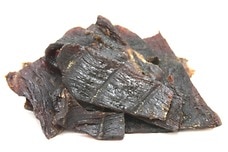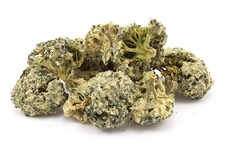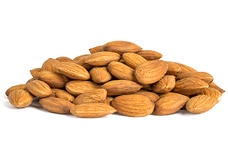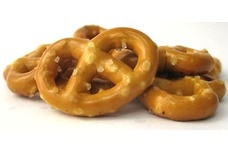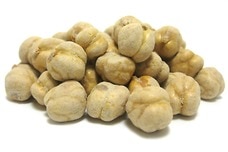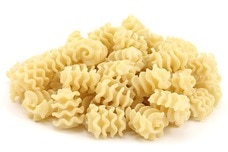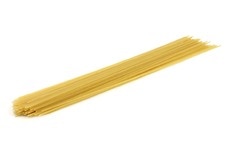Carb Cycling Diet
One of the biggest challenges facing people trying to lose weight is how to get your body to burn excess fat. Many people report that they initially have success with a diet, only to plateau after a few weeks or months. This is because your body will soon adapt to a static diet plan, which may prevent you from making progress. In response to this, a new diet called the carb cycling diet has emerged to trick your body into burning fat and using energy more efficiently.
Low Carb Snacks
What is the Carb Cycling Diet?
The carb cycling diet first emerged in the bodybuilding world (Leicht, 2015). Bodybuilders are focused on building muscle tissue while keeping their body fat as low as possible. Thus, although they need carbohydrates to provide the body with energy, they want to prevent their bodies from putting this excess energy into fat stores. Although carb cycling originated with bodybuilders, it is easily adapted for regular people interested in staying healthy. Carb cycling may help you lose weight and body fat while retaining lean muscle tissue.
As its name implies, the carb cycling diet involves cycling between high carbohydrate and low carbohydrate days. The theory behind the diet includes the idea that this will trick your body into burning fat while encouraging your cells to use energy more efficiently.
Rules to Follow with a Carb Cycling Diet
The rules behind the carb cycling diet are simple: some days are high carbohydrate days, while other days are low carbohydrate days. Your diet will depend on the type of day it is. The number of high versus low carbohydrate days depends on your unique nutrition goals. If you are focused on losing weight, aim for five low carb days per week with just two high carb days. If you want to add muscle, four high carb days interspersed with three low carb days may be more appropriate (Leight, 2015).
High Carb Snacks
On your high carb days, you may eat starchy carbohydrates along with healthy fats, vegetables, and protein. On low carb days, avoid all starchy carbohydrates. Instead, focus on eating healthy fats, vegetables, and protein. People who follow the carb cycling diet try to avoid simple carbohydrates as much as possible, no matter what type of day it is. Simple carbohydrates include sugary snacks, cereal, white bread, cookies, or soda.
Why the Carb Cycling Diet is Thought to Help You Lose Weight and Burn Fat
The carb cycling diet is derived from what scientists know about the way that your body uses carbohydrates and fat for energy. Carbohydrates are your body’s primary energy source, consisting of long chains of sugars. When you are exercising or simply at rest, your body will preferentially burn carbohydrates to get energy from the glucose that forms the carbohydrate molecules (Jequier, 1994). When carbohydrates are unavailable, your body will decide to burn fats instead. Protein is only burned when your body is under starvation conditions and fats or carbohydrates are unavailable.
The challenge when trying to lose weight is how to stimulate your body to burn fat rather than carbohydrates (as fat loss is a primary goal for weight loss). The theory behind carb cycling is that by alternating between high carb and low carb days, you can kick your body into an ideal fat-burning mode (Buhler, 2014). On high carbohydrate days, your body will release insulin that triggers your cells to take up nutrients and grow. These days also replenish the stores of glycogen in your muscles, providing a sustained source of carbohydrates. On low carbohydrate days, your body no longer has the carbohydrates to which it has become accustomed. Thus, it is forced to burn fat for fuel. Low carbohydrate days are also thought to keep your body receptive to insulin, helping you build lean muscle (Buhler, 2014).
Foods to Eat and Avoid on Each Day of the Carb Cycling Diet
On high carbohydrate days, focus on getting starchy carbs from sweet potatoes, oatmeal, whole-wheat bread, brown rice, fruit, or quinoa. These starches have a more complex carbohydrate structure, requiring your body to burn a bit more energy to break them down (Buhler, 2014). Ideally, protein should come from non-animal sources such as nuts, seeds, legumes, or soy products.
On low carbohydrate days, fruits and starchy vegetables are off limits. You may still eat low-carbohydrate vegetables, such as leafy greens, eggplant, tomatoes, broccoli, peppers, cauliflower, or avocadoes. You should also aim to get plenty of protein (again, preferably from non-animal sources) as well as healthy fats. Good, low-carbohydrate forms of healthy fats can be found in olive oil, nuts, seeds, and fatty fishes.
Considerations When Following the Carb Cycling Diet
To date, there have not been any large-scale randomized scientific studies in humans to compare the carb cycling diet to other diet and weight loss plans. Thus, it is unclear how and whether the diet truly works to burn fat. As with all diets, it is important to ensure that you get the balance of nutrients your body needs to stay healthy. Thus, even on your low-carb days when you must restrict your intake of certain fruits and vegetables, it is important to get beneficial micronutrients from other sources. For example, adding some chia seeds to a protein shake, eating a handful of goji berries, or spreading nut butter on celery can help your body get beneficial nutrients on low-carbohydrate days.
Low & High Carbohydrate Recipes
To accommodate your low carbohydrate days, we’ve included a few recipes that contain few complex carbohydrates and even fewer simple carbs to ensure that you can find a meal to meet your needs. For more low carb recipes, check out our low carb diet page.
Low Carb Recipes
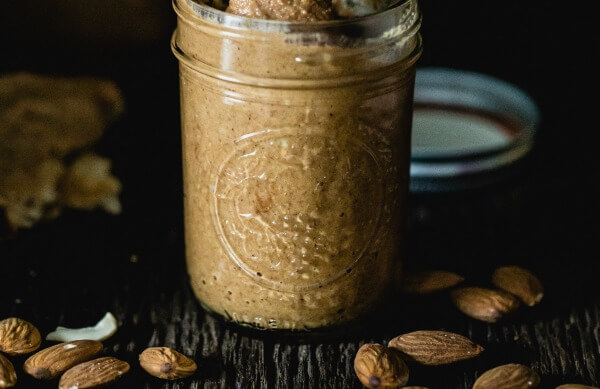
Almond Butter Recipe
Our homemade almond butter pairs perfectly with celery to offer a satisfying low-carb treat, while the spread serves to supply protein and fiber to help you feel satiated.
Ingredients: Almonds, coconut oil, maple syrup, salt
Total Time: 45 minutes
| Yield: 2 cups
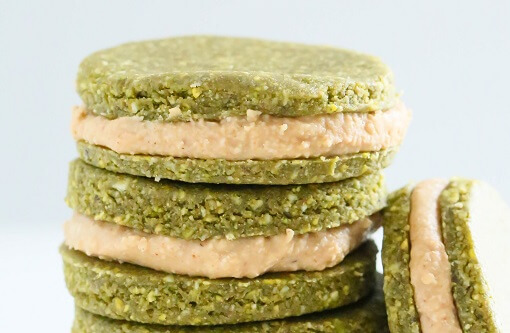
No-Bake Pistachio Cookies Recipe {gluten-free, vegan}
These cookies are a perfect treat to enjoy on low-carb days with minimal sugars (less than 3 grams per serving) and less than 10 grams of carbohydrates overall.
Ingredients: Pistachios, unsweetened shredded coconut, gluten-free rolled oats, maple syrup, moringa powder, water, vanilla extract, cashews, almond butter, vanilla, coconut oil.
Total Time: 20 minutes
| Yield: 16 cookies
High Carb Recipes
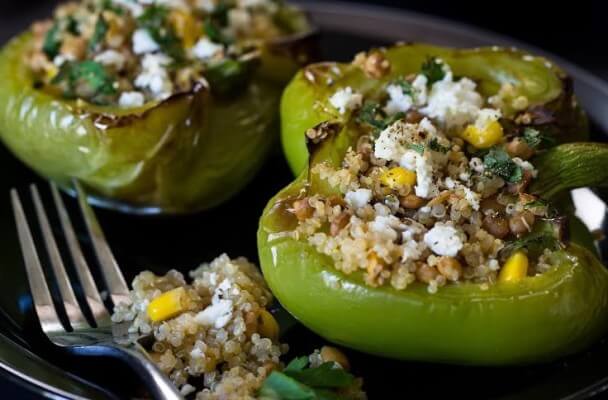
Quinoa Stuffed Peppers Recipe {gluten-free}
On high-carb days, the nutrition of this stuffed pepper plate will serve to keep your muscles building and supply you with plenty of fuel for future workouts.
Ingredients: Quinoa, green bell peppers, canned lentils, fresh spinach, feta cheese, frozen corn (thawed), salt, black pepper.
Total Time: 40 minutes
| Yield: 6 servings (8 half-peppers)
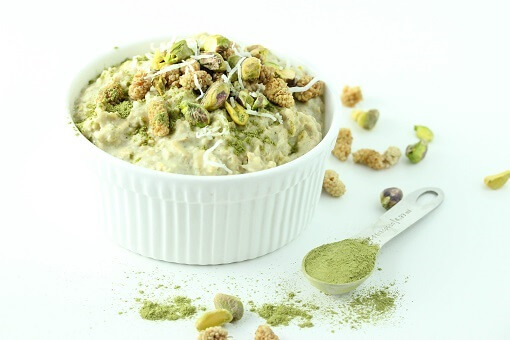
Moringa Oatmeal Recipe
Another high-carb treat, this breakfast bowl will power you through the day with a surprisingly scrumptious savor. Try it on your next high-carb day!
Ingredients: Gluten-free rolled oats, almond milk, agave or maple syrup, vanilla extract, moringa powder, pistachios, dried mulberries, unsweetened shredded coconut, chia seeds.
Total Time: 10 minutes
| Yield: 4 servings
Healthy Eating
- Healthy Snacks
- Healthy Highlights
- 5 Uses for Cacao Powder
- 5 Ways to Eat Farro
- 6 Best Gluten-Free Foods
- Alcohol and the Body
- Almond Flour Recipes
- Anti-Aging Superfoods
- Beat the Afternoon Slump
- Benefits of a Plant-Based Diet
- Benefits of Baobab
- Benefits of Cashews
- Benefits of Coconut Oil for Hair
- Benefits of Coconuts
- Benefits of Dates
- Benefits of Fenugreek
- Benefits of Garcinia Cambogia
- Benefits of Goji Berries
- Benefits of Kale Chips
- Benefits of Monk Fruit Sweetener
- Benefits of Peanuts
- Benefits of Pecans
- Benefits of Pistachios
- Benefits of Pumpkin Seeds
- Benefits of Spelt Flour
- Benefits of Steel Cut Oats
- Benefits of Sunflower Seeds
- Benefits of Tiger Nuts
- Benefits of Turmeric
- Benefits of Walnuts
- Benefits of Wheatgrass
- Best Food Fads
- Cacao vs Cocoa
- Caffeine-Free Energy Foods
- Chocolate That's Good for You
- Diet vs. Exercise
- Fat Burning Foods
- Food Myths Debunked
- Foods for Bone Density
- Foods for Colon Health
- Foods for Healthy Hair
- Foods for Healthy Skin
- Foods to Help Sleep
- Foods to Reduce Stress
- Green Tea Benefits
- Healthy Baking Flours
- Heart Healthy Habits
- High Protein Health Risks
- How to Boost Your Metabolism
- How to Lose Weight While Aging
- How to Throw a Vegan BBQ
- Kaniwa vs Quinoa
- Little Health Foods
- Low-Carb: Fad or Friend?
- Making Healthier Desserts
- Mediterranean Diet Meal Plan
- Natural Beauty Products
- Nuts for Weight Loss
- Preparing Vegan Meals
- Preventing Muscle Degeneration
- Rare Superfoods
- Reduce Sugar Intake
- Save Time By Going Vegan
- Smarter Snack Swaps
- Smoothie Ingredients
- Soy Protein vs Whey Protein
- Starting a Plant-Based Diet
- Steel Cut vs Rolled Oats
- Sugar Substitutes
- Vegan Proteins
- Vegan Substitutions for Fall Recipes
- Why Go Vegan
- Healthy Meals
- Healthy Recipes
- Sports Nutrition
- Vitamins, Minerals & Nutrients

